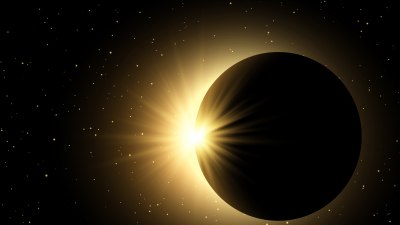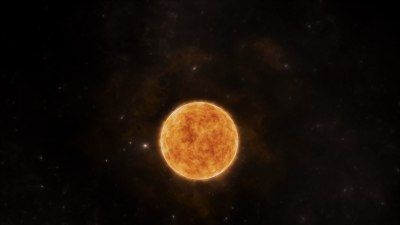Why the Sun and Moon Are Basically a Power Couple with Issues
Explore the intriguing relationship between the Sun and Moon, their cosmic dynamics, and the challenges they face.

Image by kjpargeter on Freepik
The Sun and the Moon have captivated human imagination for millennia. In many cultures, they are regarded as more than just celestial bodies; they are personified as powerful entities with a complex relationship. It can be said that they are the universe's ultimate power couple, embodying complementary forces—light and darkness, day and night, masculine and feminine. Yet, despite their partnership, there are underlying issues that stem from their distinct natures. This article delves into the dynamics of the Sun and Moon, exploring their roles, interactions, and the challenges they face in their celestial dance.
The Nature of the Sun
The Sun, a giant ball of gas primarily composed of hydrogen and helium, is the centerpiece of our solar system. It generates immense energy through nuclear fusion, producing light and heat that sustain life on Earth. Spiritually and mythologically, the Sun often represents vitality, strength, and authority. Its sunrise symbolizes new beginnings and hope, while its relentless brightness showcases strength and dominance. In astrology, the Sun is associated with ego, leadership, and creativity, embodying the will to shine and be recognized.
The Moon's Mystique
In contrast, the Moon is a smaller, rocky body that orbits the Earth. It reflects the Sun's light, creating serene nights that are often shrouded in mystery. Culturally and mythically, the Moon is viewed as a symbol of femininity, intuition, and cyclic change. Its phases—from the new moon to the full moon—represent various aspects of life, including growth, fullness, and disappearance. Astrologically, the Moon governs emotions and subconscious feelings, highlighting our instinctual reactions and inner worlds.
A Complementary Relationship
The relationship between the Sun and the Moon is fascinating because they complete each other's existence. The Sun represents the conscious mind, driving ambitions and desires, while the Moon embodies the unconscious, nurturing emotions and reflective thought processes. Together, they create the foundation for life on Earth. Without the Sun, life wouldn’t exist, but without the Moon’s gravitational pull, our planet would be a very different place. The Moon stabilizes Earth’s axial tilt, leading to a more temperate climate conducive to life.
The Power Couple Dynamic
Despite their complementary nature, the Sun and Moon are often depicted as a power couple with issues. Their relationship can be characterized by tension and conflict, similar to many human pairs. This dynamic can be observed during solar and lunar eclipses, where one body temporarily obscures the other, creating a beautiful yet dramatic interplay. Eclipses are symbolic of challenges and transformations—periods where the usual order of things is disrupted, forcing changes in perspective and awakening new understanding.
Competitive Nature
One of the main issues in the Sun-Moon relationship stems from their competitive nature for dominance. During the day, the Sun takes center stage, overshadowing the Moon and rendering it invisible. Even when the Moon is present, such as during the day, its light is often lost in the Sun's brilliance. This dynamic can lead to feelings of inadequacy for the Moon as it struggles to find its place within the larger cosmic framework. In many ways, this rivalry mirrors human experiences of seeking validation and recognition in various spheres of life.
The Emotional Disconnect
Another layer of complexity in the Sun-Moon dynamic is their emotional disconnect. The Sun’s fiery persona values action, clarity, and assertiveness, while the Moon favors reflective thought, subtlety, and intuition. These differing approaches can lead to misunderstandings and emotional distance. The Sun may perceive the Moon’s introspection as indecisiveness, while the Moon may view the Sun’s directness as overly aggressive. Such differences can generate friction but can also create opportunities for growth and deeper understanding if both parties are willing to navigate their disparities.
The Cycles of Life
The cyclical nature of the Moon is another factor that contributes to the issues in their relationship. The Moon goes through phases, waxing and waning, symbolizing the fluctuations of emotions and experiences in life. The Sun, constant and unwavering, represents stability and consistency. This divergence can lead to tensions around timing and expectations. When the Moon is at its new phase, the Sun shines so brightly, giving off light that illuminates everything in its presence. However, during the full Moon, the Moon shines brightly, a reminder of the beauty that can arise when both bodies acknowledge each other's strengths.
Cultural Interpretations
Cultural narratives often highlight the tensions between the Sun and the Moon. In various mythologies, they are portrayed as rivals, lovers, or even enemies. In some Native American tribes, the Sun is seen as a powerful male figure, while the Moon embodies the qualities of a nurturing female guardian. The story of them falling in love, only to be eternally separated, symbolizes the beauty and pain inherent in their relationship. These stories provide insight into human emotions, echoing the struggles people encounter in their relationships.
The Balance of Power
A significant aspect of the Sun-Moon relationship lies in balance. For harmony to exist, each entity must respect and appreciate the other’s role. The Sun needs the Moon to reflect its light in the dark, just as the Moon needs the Sun to exist. Their relationship exemplifies the importance of working through differences to find equilibrium. One cannot overshadow the other permanently; they must coexist, influencing life on Earth and even the cosmos itself. Their balance is essential not only for their relationship but for the broader workings of nature.
Lessons from the Sun and Moon
The Sun and Moon, despite their issues, offer valuable lessons about relationships. They emphasize the importance of embracing differences and understanding the unique qualities that each partner brings. Their dynamic teaches us that competition does not have to lead to conflict—rather, it can stimulate growth and deeper connections. There’s profound beauty in recognizing that every relationship has its challenges, yet mutual respect and appreciation can create a harmonious coexistence.
In essence, the Sun and Moon are a captivating cosmic couple characterized by both harmony and conflict. Their duplicity represents the dualities present in our lives—light and dark, active and passive, conscious and unconscious. Understanding their relationship invites us to reflect on our partnerships and the complexities they entail. Recognizing that misunderstandings, competition, and emotional disconnects can be part of any relationship, we can strive for balance, cultivating a deep appreciation for the distinct roles that each person plays. Ultimately, just as the Sun and Moon demand respect for their cosmic dance, we must acknowledge the intricate dance of relationships and the surreal beauty found within its challenges.











